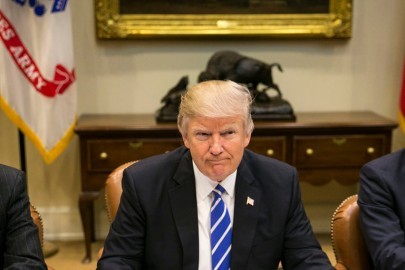President Trump signed an executive order on Monday blocking citizens of six predominantly Muslim countries from entering the United States.
A new revised order was signed by the US President Donald Trump, aiming to avoid the protests that engulfed the nation’s airports after the first immigration directive on Jan. 27. The first order was later blocked by a federal appeals court.
The new order imposes again a 90-day ban on travelers, but it removed Iraq. According to sources, this was requested by Defense Secretary James Mattis, who feared it would hamper coordination to defeat the Islamic State.
The order exempts permanent residents and current visa holders. It also drops language offering preferential status to persecuted religious minorities. This provision was widely interpreted as favoring other religious groups over Muslims. Finally, it imposes a 120-day ban on Syria, instead of an indefinite one.
The new order retains central elements of the old one, cutting the number of refugees admitted to the United States each year to 50,000 from about 110,000. President Trump is also leaving open the possibility of expanding the ban to other countries and putting Iraq back on the banned list if the country’s leaders fail to comply with a requirement that they increase intelligence sharing.
“Unregulated, unvetted travel is not a universal privilege, especially when national security is at stake,” said John F. Kelly, the homeland security secretary.
Ask me anything
Explore related questions





